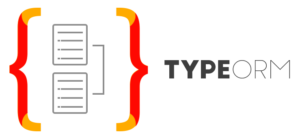Learn more about TypeORM MongoDB npm. Our Server Management Support team is here to help you with your questions and concerns.
TypeORM MongoDB npm
Did you know that TypeORM is a versatile ORM tool?
It easily integrates with platforms like NodeJS, Browser, Cordova, PhoneGap, etc. Whether we are working with TypeScript or JavaScript (ES5, ES6, ES7, ES8), TypeORM ensures compatibility with the latest JavaScript features.

Today, we will walk through the installation process and see how to kickstart our development journey with TypeORM.
Benefits offered by TypeORM
TypeORM offers several advantages making it a popular choice for developers when working with databases. Here are some key advantages of using TypeORM:
- Cross-Platform Compatibility:
TypeORM works across various platforms. This offers a consistent ORM solution for NodeJS, browsers, mobile frameworks, and desktop applications.
- Language Support:
it is designed for TypeScript and JavaScript (ES5-ES8). Additionally, it caters to a wide audience with diverse language preferences.
- Latest JavaScript Features:
TypeORM stays updated with the latest JavaScript features, allowing developers to write cleaner and more efficient code.
- Active Record and Data Mapper Patterns:
Supporting both patterns, TypeORM offers flexibility for developers to choose based on application requirements.
- Loosely Coupled and Scalable Applications:
TypeORM supports building high-quality, loosely coupled, and scalable applications. It also adapts to changing project needs.
- Extensive Database Support:
Developers can choose the right database for their project.
- CLI Commands for Project Initialization:
TypeORM’s CLI commands simplify project setup, saving time and effort in starting projects.
- Integration with Express:
TypeORM offers easy project generation with Express pre-installed.
- Docker Integration:
TypeORM streamlines Docker integration with a command for generating Docker Compose files.
How to Install TypeORM
- To begin, install the TypeORM npm package with this command:
npm install typeorm –saveThen, we will get an output similar to the one below:
+ typeorm@0.2.24
+
added 1 package and audited 1236 packages in 4.648sAlternatively, for a global installation, we can use:
npm install typeorm -g - Then, we have to install reflect-metadata shim with this command:
npm install reflect-metadata --saveAfter that, import it to the global place of the app:
import "reflect-metadata"Then, we will see this response:
+ reflect-metadata@0.1.13
added 1 package and audited 1236 packages in 2.315s
- Now, we have to install node typings:
npm install @types/node –save-dev
How to Install Database Drivers
- Install MySQL or MariaDB package:
npm install mysql –save - Install PostgreSQL package:
npm install pg –save - Install SQLite package:
npm install sqlite3 –save - Install Microsoft SQL Server package:
npm install mssql –save - Install sql.js package:
npm install sql.js –save - Install Oracle server package:
npm install oracledb –save - Install MongoDB package:
npm install mongodb –save - Additional packages for specific databases:
- SAP Hana:
npm install @sap/hana-client
npm install hdb-pool - Google Cloud Spanner:
npm install @google-cloud/spanner –saveWe have to set authentication credentials and, if using the emulator:
export GOOGLE_APPLICATION_CREDENTIALS="KEY_PATH"
export SPANNER_EMULATOR_HOST=localhost:9010
- SAP Hana:
Quick Start
The fastest way to start with TypeORM is to use its CLI commands to generate a starter project. Quick Start works only if we use TypeORM in a NodeJS application.
- First, generate a starter project:
npx typeorm init --name MyProject --database postgresThis command creates a project structure with sample files. Now head, to the project directory.
- Then, install project dependencies:
npm install - Next, edit data-source.ts:
```typescript
export const AppDataSource = new DataSource({
type: "postgres",
host: "localhost",
port: 5432,
username: "test",
password: "test",
database: "test",
synchronize: true,
logging: true,
entities: [Post, Category],
subscribers: [],
migrations: [],
});
We have to modify connection options as needed.
- Then, run the application:
npm start
[Need assistance with a different issue? Our team is available 24/7.]
Conclusion
In brief, our Support Experts introduced us to using TypeORM MongoDB and installing npm packages.
PREVENT YOUR SERVER FROM CRASHING!
Never again lose customers to poor server speed! Let us help you.
Our server experts will monitor & maintain your server 24/7 so that it remains lightning fast and secure.







0 Comments